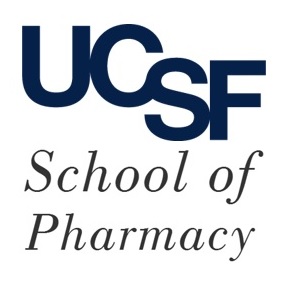Publications
Whole-transcriptome sequencing in blood provides a diagnosis of spinal muscular atrophy with progressive myoclonic epilepsy. Hum Mutat 38, 611-614 (2017).
Whole-Genome and RNA Sequencing Reveal Variation and Transcriptomic Coordination in the Developing Human Prefrontal Cortex. Cell Rep 31, 107489 (2020).
Whole-exome sequencing in adult patients with developmental and epileptic encephalopathy: It is never too late. Clin Genet 98, 477-485 (2020).
Whole exome sequencing analyses reveal gene-microbiota interactions in the context of IBD. Gut 70, 285-296 (2021).
Weighted pseudolikelihood for SNP set analysis with multiple secondary outcomes in case-control genetic association studies. Biometrics 73, 1210-1220 (2017).
VEXOR: an integrative environment for prioritization of functional variants in fine-mapping analysis. Bioinformatics 33, 1389-1391 (2017).
A unified framework for joint-tissue transcriptome-wide association and Mendelian randomization analysis. Nat Genet 52, 1239-1246 (2020).
Ultra-Rare Genetic Variation in the Epilepsies: A Whole-Exome Sequencing Study of 17,606 Individuals. Am J Hum Genet 105, 267-282 (2019).
Type 2 and interferon inflammation strongly regulate SARS-CoV-2 related gene expression in the airway epithelium. bioRxiv (2020). doi:10.1101/2020.04.09.034454
Type 2 and interferon inflammation regulate SARS-CoV-2 entry factor expression in the airway epithelium. Nat Commun 11, 5139 (2020).
Transcriptomic signatures across human tissues identify functional rare genetic variation. Science 369, (2020).
A Transcriptome-Wide Association Study Identifies Candidate Susceptibility Genes for Pancreatic Cancer Risk. Cancer Res 80, 4346-4354 (2020).
Testing for the indirect effect under the null for genome-wide mediation analyses. Genet Epidemiol 41, 824-833 (2017).
Testing for gene-environment interaction under exposure misspecification. Biometrics 74, 653-662 (2018).
A synthetic-diploid benchmark for accurate variant-calling evaluation. Nat Methods 15, 595-597 (2018).
Synaptic processes and immune-related pathways implicated in Tourette syndrome. Transl Psychiatry 11, 56 (2021).
Survival Analysis on Rare Events Using Group-Regularized Multi-Response Cox Regression. Bioinformatics (2021). doi:10.1093/bioinformatics/btab095
Sub-genic intolerance, ClinVar, and the epilepsies: A whole-exome sequencing study of 29,165 individuals. Am J Hum Genet 108, 965-982 (2021).
A Robust Method Uncovers Significant Context-Specific Heritability in Diverse Complex Traits. Am J Hum Genet 106, 71-91 (2020).
Regulatory genomic circuitry of human disease loci by integrative epigenomics. Nature 590, 300-307 (2021).
Rare protein-altering variants in ANGPTL7 lower intraocular pressure and protect against glaucoma. PLoS Genet 16, e1008682 (2020).
Rapid response to the alpha-1 adrenergic agent phenylephrine in the perioperative period is impacted by genomics and ancestry. Pharmacogenomics J 21, 174-189 (2021).
RAFFI: Accurate and fast familial relationship inference in large scale biobank studies using RaPID. PLoS Genet 17, e1009315 (2021).
Race, socioeconomic deprivation, and hospitalization for COVID-19 in English participants of a national biobank. Int J Equity Health 19, 114 (2020).
Quantifying the Polygenic Contribution to Cutaneous Squamous Cell Carcinoma Risk. J Invest Dermatol 138, 1507-1510 (2018).
PSCAN: Spatial scan tests guided by protein structures improve complex disease gene discovery and signal variant detection. Genome Biol 21, 217 (2020).
A positively selected FBN1 missense variant reduces height in Peruvian individuals. Nature 582, 234-239 (2020).
Population-scale tissue transcriptomics maps long non-coding RNAs to complex disease. Cell 184, 2633-2648.e19 (2021).
Population sequencing data reveal a compendium of mutational processes in the human germ line. Science 373, 1030-1035 (2021).
Polygenic risk modeling with latent trait-related genetic components. Eur J Hum Genet (2021). doi:10.1038/s41431-021-00813-0
Polygenic adaptation on height is overestimated due to uncorrected stratification in genome-wide association studies. Elife 8, (2019).
Phenotype risk scores identify patients with unrecognized Mendelian disease patterns. Science 359, 1233-1239 (2018).
A phenome-wide association study of 26 mendelian genes reveals phenotypic expressivity of common and rare variants within the general population. PLoS Genet 16, e1008802 (2020).
Opportunities and challenges for transcriptome-wide association studies. Nat Genet 51, 592-599 (2019).
Neurophysiological and Genetic Findings in Patients With Juvenile Myoclonic Epilepsy. Front Integr Neurosci 14, 45 (2020).
Negative selection in humans and fruit flies involves synergistic epistasis. Science 356, 539-542 (2017).
A multi-task convolutional deep neural network for variant calling in single molecule sequencing. Nat Commun 10, 998 (2019).
Multiple phenotype association tests using summary statistics in genome-wide association studies. Biometrics 74, 165-175 (2018).
Multi-Ethnic Genome-Wide Association Study of Decomposed Cardioelectric Phenotypes Illustrates Strategies to Identify and Characterize Evidence of Shared Genetic Effects for Complex Traits. Circ Genom Precis Med 13, e002680 (2020).
Modeling epistasis in mice and yeast using the proportion of two or more distinct genetic backgrounds: Evidence for "polygenic epistasis". PLoS Genet 16, e1009165 (2020).
Methods for the Analysis and Interpretation for Rare Variants Associated with Complex Traits. Curr Protoc Hum Genet 101, e83 (2019).

 ]
] 



